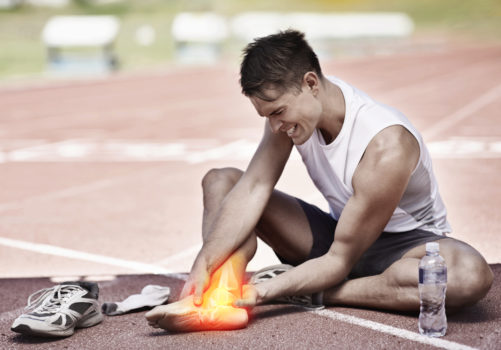
Various studies support the pros and cons of each style – so which is correct?
Most of the tenets of good running form are universally agreed upon by coaches, athletes, physiologists, form gurus and shoe designers: an upright postural alignment with a slight forward tilt, a compact arm swing and short strides that result in a cadence of 180 steps per minute or higher.
But the one thing that still seems to be a stickling point is footstrike-how and where your foot hits the ground. Certainly there is a distinct difference between heel-striking, a midfoot-striking gait and running on your forefoot. Various studies support the pros and cons of each style, but the impacts also vary considerably among individual runners. So what’s best for you? Where your foot contacts the ground is much more impor- tant than how it contacts the ground, says Bend, Ore., physical therapist Jay Dicharry, one of the country’s leading running gait analysts and running injury experts.
Are you a stomper?
“I look at footstrike as more of an effect than a cause in running form,” Dicharry says. “There’s more to it than just the foot- strike. Just because you heel-strike doesn’t mean you have bad form.”
But, he concedes, runners who are heel-striking are most likely, but not always, overstriding. “By moving the footstrike closer to the body, a lot of runners will land more on their midfoot, but some will still land on their heel, and that’s totally OK,” Dicharry says. “Likewise, there are plenty of overstriding forefoot strikers out there.”
Studies show between 65 and 80 percent of runners are injured every year. Many of those overuse injuries result from a runner applying too much force on a repetitive basis. The way to reduce the chance for injuries is to run with the least possible musculoskeletal stress on your system possible with the least metabolic cost, Dicharry says.
How can you tinker with your mechanics to improve your form? Start by running in lighter shoes with a flatter heel-toe ramp angle (but not necessarily minimalist models) and increasing stride cadence by shortening stride length, Dicharry says. Each of those things will help bring your footstrikes closer to your body, he says.
“The most important thing is that you want your feet to land as close to your body for a given pace as possible,” says Dicharry, the author of “Anatomy for Runners: Unlocking Your Athletic Potential for Health, Speed, and Injury Prevention.”
If you force your body into a specific forefoot strike, you might be able to instantly decrease the amount of impact force and biomechanical strain, Dicharry says.
But you also might be forcing yourself to overstride, making yourself work harder and ultimately lessening your running economy, he adds. “Runners who force themselves into landing on their forefoot generally decrease impact strain. But if you lack hip extension and try to force a forefoot contact, you’ll still be overstriding and will end up working much harder to run the same speed.”
Peter Larson, Ph.D, another of the country’s leading running form and injury experts, agrees. The author of “Tread Lightly: Form, Footwear and the Quest for Injury-Free Running,” is a proponent of just letting the feet do their own thing.
“The obsession with looking at footstrike and forcing a certain type of footstrike is sort of counterproductive,” says Larson, a biology professor at Saint Anselm College in Manchester, N.H., who also teaches courses on anatomy and exercise physiology. “If you start by changing to shoes with a lower heel or running with a shorter stride length, your footstrike will change, even if you still don’t change from being a heel-striker to a midfoot- or forefoot-striker.”
Quick Tips to Fixing Your Form
Running gait analysis Bend expert Jay Dicharry, director of biomechanics at Rebound Physical Therapy in Bend, Ore., offers up some basic tips to improve your form and increase your running economy.
Get out of the back seat. “A lot of runners run with an arched lower back, which puts the body weight too far back,” Dicharry says. “Running in lighter shoes with a flatter heel-toe ramp will help facilitate getting out of the back seat, but so will consciously running with upright, slightly forward-leaning posture.”
Land close to your body. The reason many runners run with a dramatic heel-striking gait is because they’re overstriding. Try to have your feet hit the ground as close to your body as possible by shortening your strides and increasing your stride cadence.
Vary the surfaces you run on. “Your body figures out how to land better when you have more practice landing on surfaces that aren’t flat and smooth,” he says. Not everyone has access to undulating trails with rough surfaces. If that’s the case, vary your runs by running through a grass park or running over the rough concrete of an alley.
Run softly. Try to run with as little impact force as possible with light footstrikes. “Smooth and soft is best,” Dicharry says. “Being a heel-striker isn’t bad, but if you hear a ‘ker-plop’ every time your foot hits the ground it means that muscles in the lower leg are working overtime to control the lowering down of your forefoot-one of the major causes of shin splints. If that’s you, shortening your stride so that your feet land closer to your body, increasing your cadence and running more upright will help reduce that impact force a lot.”
This piece first appeared in the November 2012 issue of Competitor magazine.
